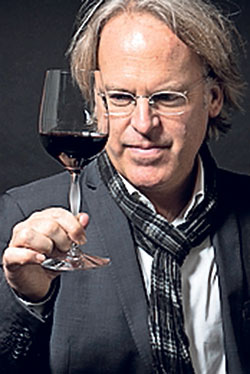First printed in the Financial Times on November 15, 2014
Three years ago, wine conversation in Hong Kong was mostly about investment. Consumers seemed less interested in drinking than in speculating on the best vintages. I was asked almost daily which wines I would invest in, by just about anyone I met with a passing interest in wine.
Today, the “investment” word is seldom spoken in Hong Kong or mainland China, and it is the same in many other fine wine markets, in Europe, the US and Asia. In fact, there is an underlying discontent among many wine buyers who paid speculative high prices for bottles of highly rated wines that have lost as much as 30 per cent of their value.
For example, 2010 Château Lafite Rothschild, a wine that I rated at 99 points, currently sells for about $1,300 a bottle, while in May 2011 it sold for about $1,800, according to Wine-Searcher, the online search engine. Or take the 2009 Château Margaux, which I gave 100 points. It sells for about $1,150 a bottle, while in October 2011 it sold for about $1,425.
However, the market seems less volatile for investment-grade wines at the moment. And this suggests that it might be the right time to start buying again.
Robert Sleigh, head of Sotheby’s wine department in Hong Kong, says: “Barring major negative global economic forces, it is difficult to see investment-grade wines depreciating in the short term. The international wine market is more mature now and ultimately healthier, making near-term price decreases less likely.”
Indeed, it is difficult to think that rare bottles of fine Burgundies from such sought-after producers as Domaine de la Romanée-Conti or Georges Roumier, or collectable Bordeaux such as Le Pin or Pétrus, could be priced any lower than today. And such wines from top vintages are consumed every day, particularly in Hong Kong. So rarity comes into play, as bottles are opened and consumed.
“Now is a prime time for investing, if you are smart and do your homework right,” says Jeff Zachariah, head of Zachys wine shop and auction house in New York. “Of course, you need to be keyed into trends and invest not for today, but for tomorrow.”
Having a long-term view is certainly essential but buying the right wines is equally important. Classics such as collectable Burgundies, Bordeaux and champagne are a good bet, although some Californian and Italian wines are also becoming popular.
Burgundy is clearly an investment-grade wine at the moment and the best bottles from the best producers are harder and harder to find. Most are under allocation and difficult to acquire, particularly for new buyers.
Bordeaux is simpler. Young vintages of the top châteaux are easier to buy than collectable vineyard-designated wines from Burgundy because the latter is made in such small quantities. Great mature vintages of collectable Bordeaux are equally difficult to find in investment quantities, however, as they have been drunk.
“The savvy buyer can pick off a case here and a case there at prices way below historical highs – maybe 20-50 per cent less,” says David Sokolin of Sokolin Wine Merchants in New York. “But if you’re looking for 50 cases, prices are generally higher.”
Each day, investment-quality wines are opened and become rarer and rarer. The opportunity to drink some of the modern classics such as 1989 Château Haut-Brion or 1982 Château Mouton Rothschild – both 100-point wines – becomes ever more difficult and more expensive. Current vintages are inexpensive by comparison.
“Great wine is one of the few tradeable commodities that when it’s made, that’s it,” says Jonathan Slone, a keen wine collector and chairman of Hong Kong’s CLSA, one of Asia’s largest institutional brokers. “Art is the same, but you don’t consume art. People know how many Rembrandts there are in the world, but they don’t know how many 1959 Lafites are left. And if you want to see a Rembrandt painting, you can go to a gallery. But to experience 1959 Lafite, you have to pop the cork.”

